Spiders come in so many colors, shapes, and sizes. Black and white spiders are common and they also have unique markings. For example, some spiders are black with white stripes or spots, while others are mixed with other colors.
Follow along to learn more about 6 different types of black and white spiders.
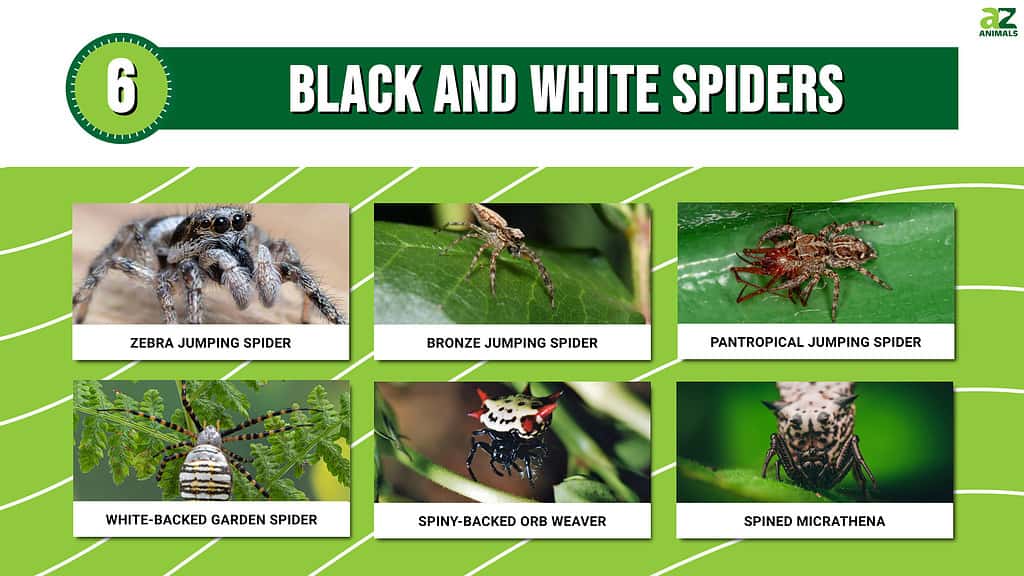
1. Zebra Jumping Spider
Zebra jumping spiders are one of the most popular black and white spiders in the world. You can find them in Europe, North America, and North Asia. They are native to the Northern Hemisphere. Zebra jumping spiders live in open habitats. They are often found in vertical spaces near homes. Zebra jumping spiders are jumping spiders that “dance” as a courtship dance. They bend down and wiggle their front legs. As their name suggests, Zebra jumping spiders have black and white colorations that look like zebra stripes. They also have eight eyes and are small spiders, about 5–9 mm long. Females are typically larger, but males have longer mouthparts.
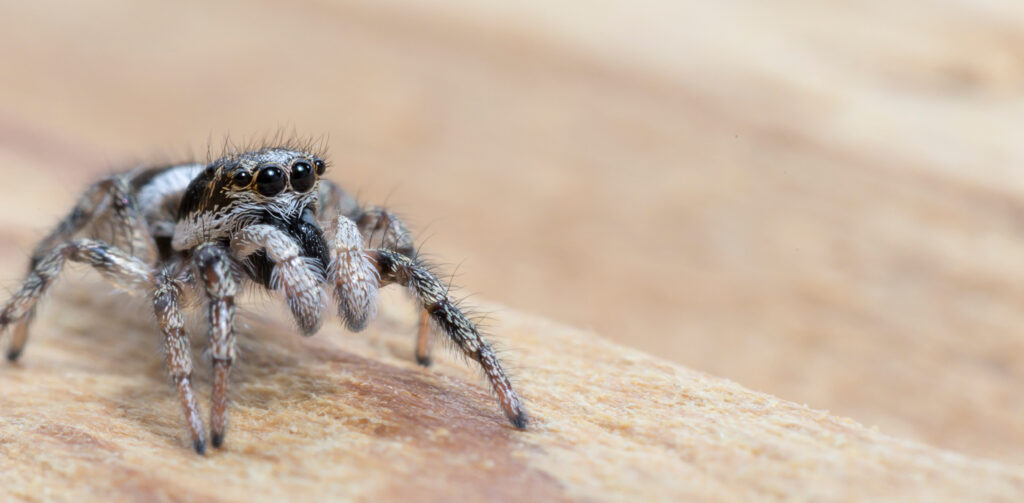
Zebra jumping spiders have black and white colorations that look like zebra stripes. They are one of the most well-known black and white spiders in the world.
©Rabanser/Shutterstock.com
2. Bronze Jumping Spider
The bronze jumping spider is another jumping spider, however; it has more than just a white and black coloration. Bronze jumping spiders are also called bronze spiders and bronze lake jumpers. These spiders are found throughout the United States and Canada. Interestingly, it’s easy to tell apart males from females because of their coloration. Female bronze jumping spiders have darker abdomens with white spots and lighter cephalothorax. Females are also slightly larger and can measure between 6 to 8 mm while male bronze jumping spiders are 4.7 to 6.7 mm long. These spiders live in urban and rural areas. They sometimes live in homes, but more often live outside. Their brown, black, white, grey, and tan coloration helps them blend into the bark of trees.
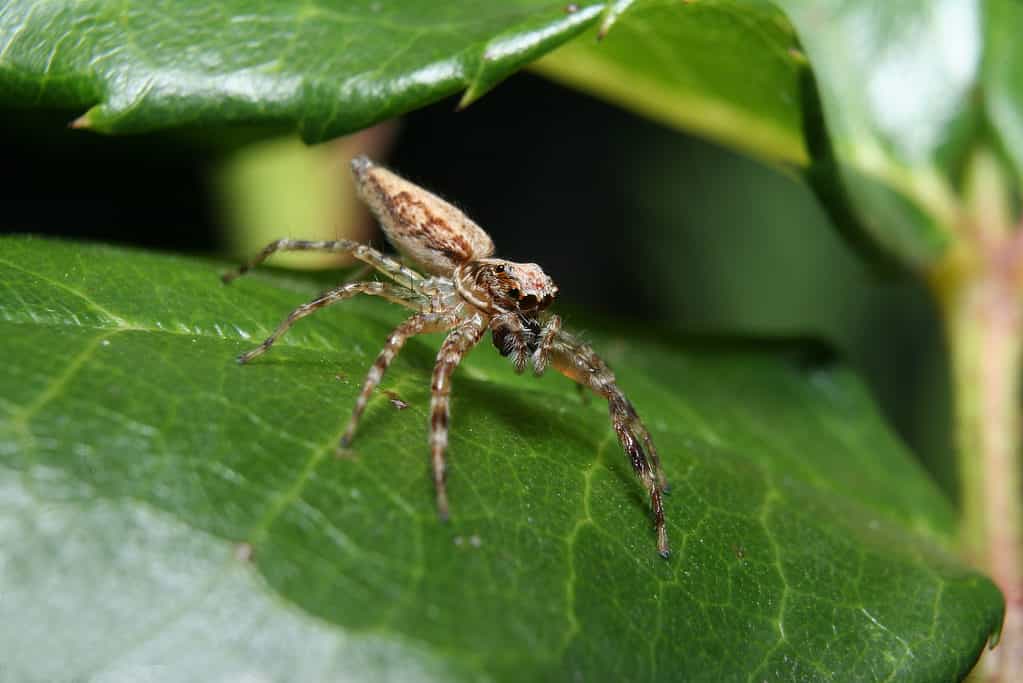
The bronze jumping spider camouflages well outside, specifically on trees.
©iStock.com/Andrew Waugh
3. Pantropical Jumping Spider
Next on our list of black and white spiders is the pantropic jumping spider. This spider is brown, white, black, and tan. These colorful jumping spiders are also covered in short grey hairs. They are native to tropical regions of Africa and Asia, however, they can be found all over the world. They are very common in the Americas and were also introduced to the Maldives and Australia. The pantropical jumping spider is about 9 to 12 mm long, which is less than half an inch. Male pantropical jumping spiders are generally darker than females. Most of these spiders live in buildings, however, they have been recorded in citrus groves and cotton fields. Pantropical jumping spiders also don’t build nests, instead, they make hunting forays from ceilings.
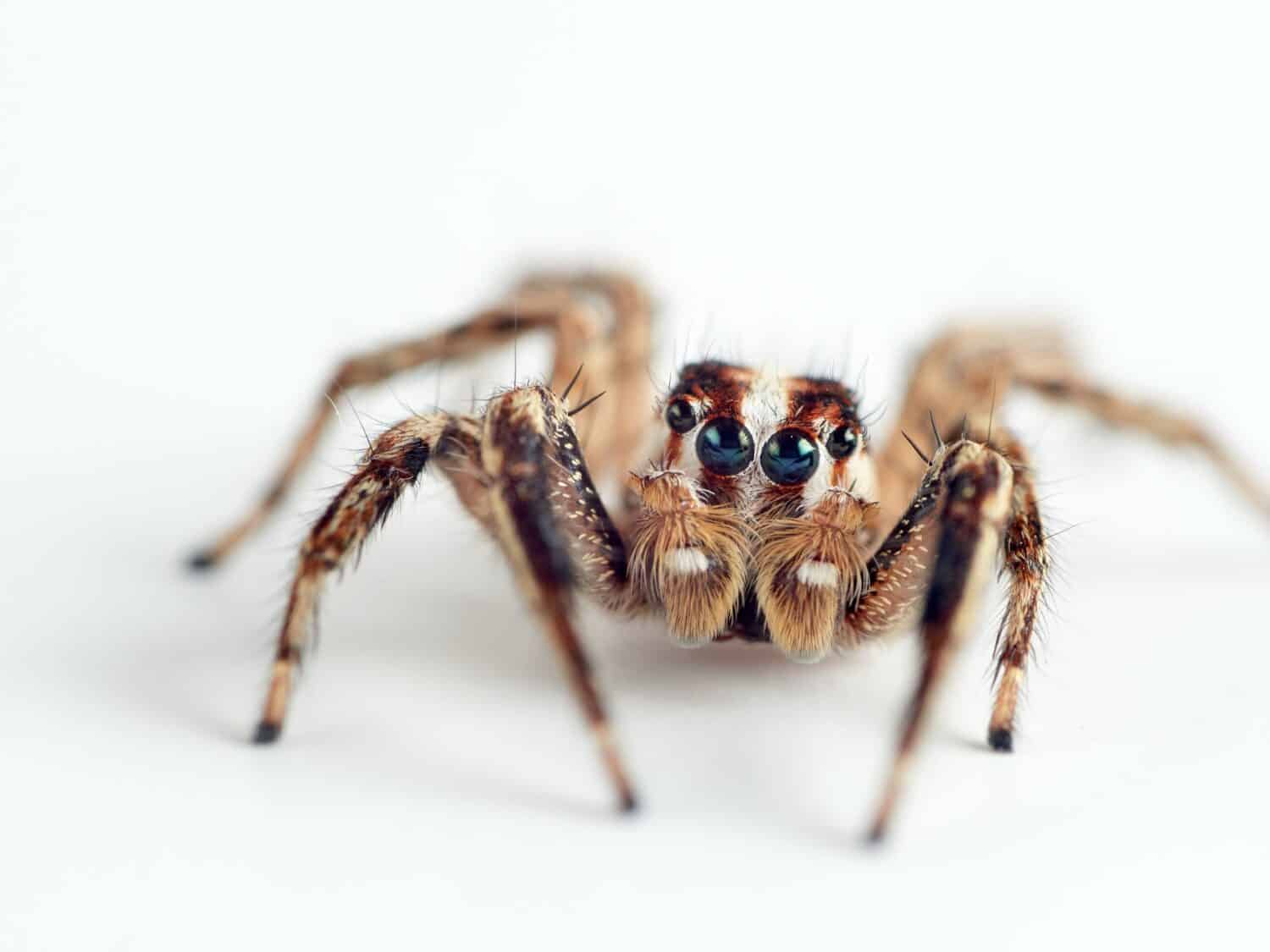
Pantropical jumping spiders are native to Southeast Asia.
©Macronatura.es/Shutterstock.com
4. White-Backed Garden Spider
Another black and white spider is the white-backed garden spider. Another name for this spider is the banded garden spider. These garden spiders have thick bodies and long legs. Other than black and white, it also has orange stripes on its legs and body. White-backed garden spiders are orb weaver spiders that live outside in tall grasses. They are known for weaving beautiful and intricate webs across vegetation. White-backed garden spiders can grow up to an inch long. Males are slender, while female white-backed garden spiders are thicker.
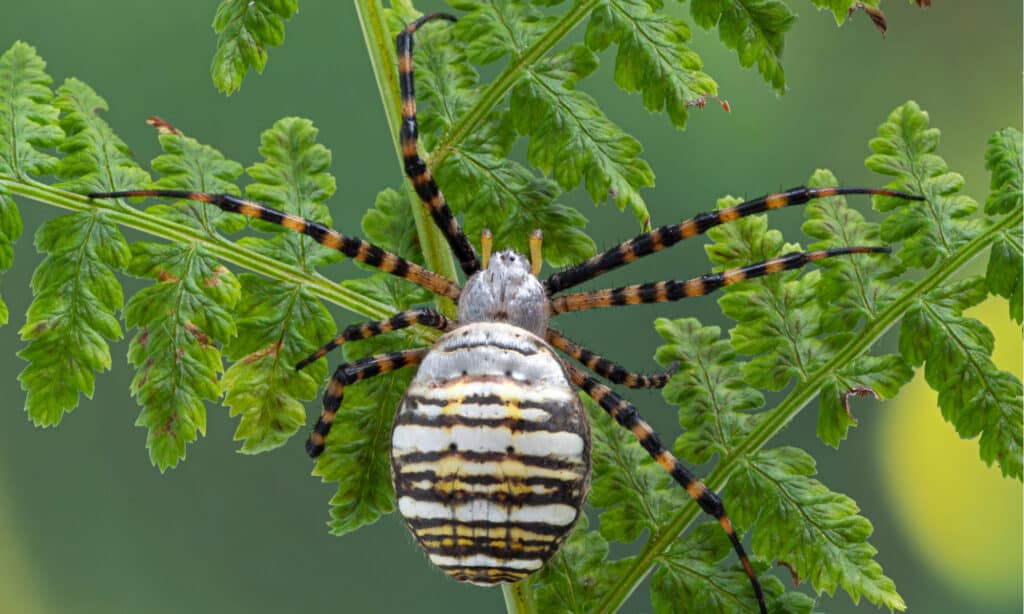
White-backed garden spiders have many nicknames including the banded garden spider.
©Ernie Cooper/Shutterstock.com
5. Spiny-backed Orb Weaver
The spiny-backed orb weaver is another well-known black and white spider. They are easy to spot and identify because of their unique shape. These small spiders are generally less than an inch long. They have six spiny or pointy six abdominal projections on the abdomen. These spiders usually have a black carapace, legs, and undersides with white spots under their abdomens. Spiny-backed orb weavers are sometimes white, red, or yellow. Interestingly, spiny-backed orb weavers have short lives. Females die after producing an egg mass. They spin strong and sticky webs that help them hunt for food. Many insects get trapped in their webs, including butterflies and dragonflies.

The spiny-backed orb weavers have a black carapace, legs, and undersides with white spots under their abdomen.
©Vinicius R. Souza/Shutterstock.com
6. Spined Micrathena
Last but not least is the spined micrathena. Another name for this unique spider is the castle back orb weaver. These spiders are native to North and Central America. They weave stunning, tight, and large webs. The spined micrathena has a large and spiny, black and white body. Some spined macrathena are yellow on their sides. These spiders are also hardworking. They change the center of their web every night and only use the same web for about 6 to 7 days.
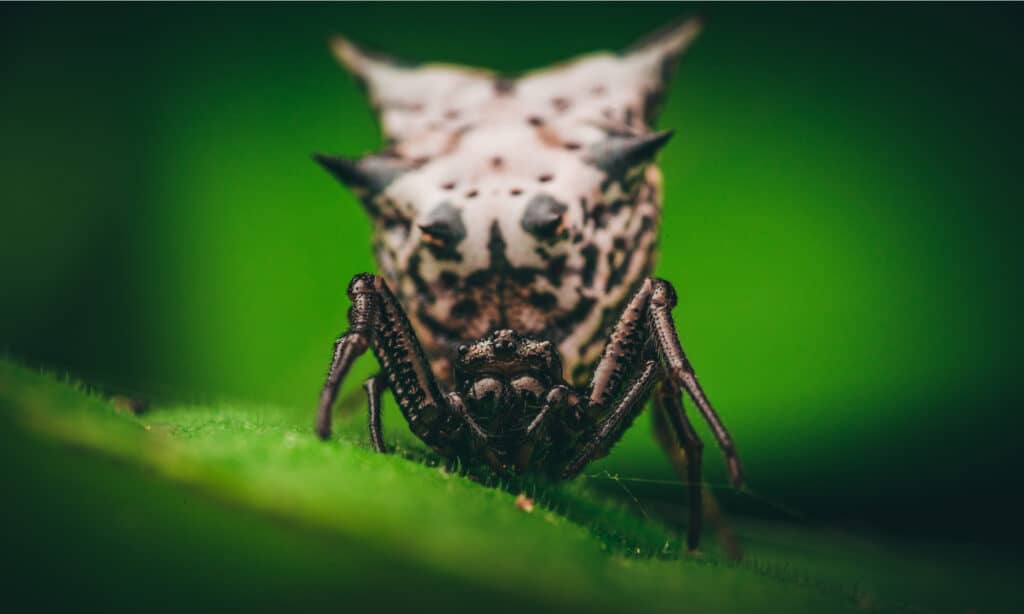
The spined micrathena is another black and white spider, but some have yellow markings on their sides.
©Wirestock Creators/Shutterstock.com
| Common Name | Description |
|---|---|
| Zebra Jumping Spider | Zebra jumping spiders are small spiders, about 5–9 mm long, found in Europe, North America, and North Asia. They have black and white colorations that look like zebra stripes. They are jumping spiders that “dance” as a courtship dance. |
| Bronze Jumping Spider | The bronze jumping spider is found throughout the United States and Canada. Females have darker abdomens with white spots and lighter cephalothorax. Their brown, black, white, grey, and tan coloration helps them blend into the bark of trees. |
| Pantropical Jumping Spider | The pantropical jumping spider is about 9 to 12 mm long and is native to tropical regions of Africa and Asia. They are very common in the Americas and were also introduced to the Maldives and Australia. They don’t build nests, instead, they make hunting forays from ceilings. |
| White-Backed Garden Spider | The white-backed garden spider is an orb weaver spider that lives outside in tall grasses. They have thick bodies and long legs. Other than black and white, it also has orange stripes on its legs and body. They are known for weaving beautiful and intricate webs across vegetation. |
| Spiny-backed Orb Weaver | The spiny-backed orb weaver is easy to spot and identify because of its unique shape. These small spiders are generally less than an inch long. They have six spiny or pointy six abdominal projections on the abdomen. They spin strong and sticky webs that help them hunt for food. |
| Spined Micrathena | The spined micrathena, also known as the castle back orb weaver, is native to North and Central America. They weave stunning, tight, and large webs. They have a large and spiny, black and white bodies. Some spined macrathena are yellow on their sides. |
The photo featured at the top of this post is © Mario.Pieper/Shutterstock.com
Thank you for reading! Have some feedback for us? Contact the AZ Animals editorial team.






